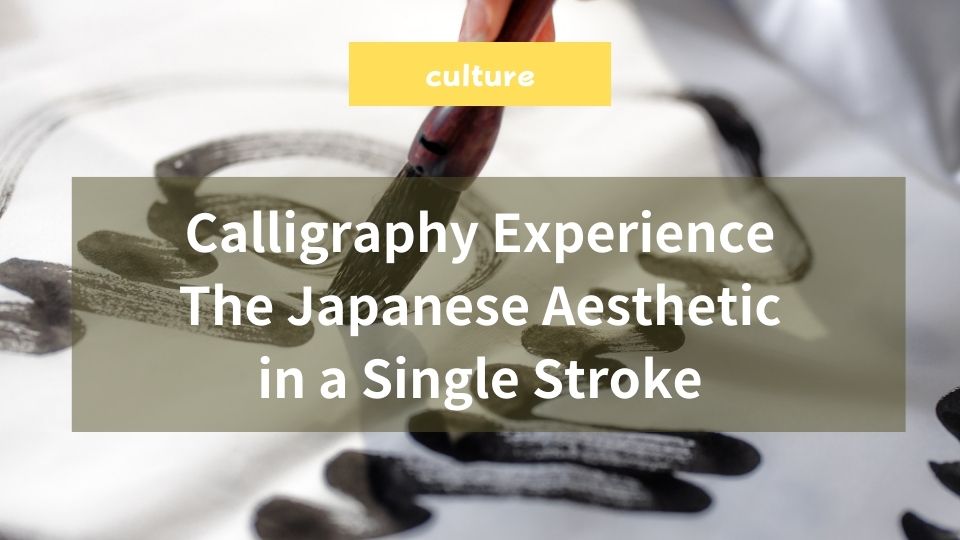Hello, this is the ShimaSuki editorial team.
Japanese traditional culture is imbued with a refined sense of aesthetics. Among these, “shodō” (calligraphy) is an art form that deeply reflects Japanese history and philosophy. Using brush and ink, each character is carefully crafted, requiring concentration and an appreciation for beauty.
Recently, calligraphy experiences have become increasingly popular among foreign visitors to Japan. More than just writing characters, calligraphy embodies the Japanese values of “ma” (space), “harmony,” and “individuality,” captivating many participants. In this article, we introduce the fundamentals of calligraphy, places to experience it, and the Japanese aesthetic conveyed through calligraphy.
2. What is Calligraphy?
Shodō (calligraphy) is a traditional Japanese art form that developed from Chinese character culture. During the Heian period, Japan developed its own distinctive writing style, known as “wayō,” characterized by a uniquely Japanese sense of beauty.
Calligraphy is generally divided into three main styles:
- Kaisho (Regular Script): A basic script where each stroke is written carefully.
- Gyōsho (Semi-Cursive Script): A more fluid and practical script compared to kaisho.
- Sōsho (Cursive Script): A highly abbreviated and artistic style of writing.
Calligraphy is not just about writing characters beautifully; brush movements, ink density, and the writer’s state of mind all play a crucial role. As the saying “Sho wa hito nari” (Calligraphy reflects the person) suggests, a person’s character and emotions are often revealed in their writing.
3. The Appeal of a Calligraphy Experience
A calligraphy experience is not only easy to enjoy for beginners but also offers a deep understanding of Japanese culture. Here are some of the key appeals of calligraphy for foreign visitors:
① A Meditative and Calming Experience
Holding a brush, controlling your breathing, and focusing on each stroke creates a meditative atmosphere. This process allows participants to experience the unique Japanese concept of “quiet beauty.”
② Learning the Japanese Concept of Beauty
Calligraphy emphasizes balance, line thickness, and the use of blank space. These aspects connect with Japanese aesthetics, such as “wabi-sabi” and “ma” (space), providing insight into the importance of harmony in Japanese culture.
③ The Joy of Creating Your Own Artwork
During a calligraphy experience, participants choose their favorite kanji or phrases and create their own unique artwork. These pieces can be taken home, making them an ideal souvenir.
4. Where to Experience Calligraphy
There are many places in Japan where you can enjoy a calligraphy experience. Some of the best locations include:
① Tokyo: Calligraphy Schools and Cultural Experience Centers
Tokyo has numerous calligraphy experience workshops for foreign visitors. Cultural centers in Asakusa and Shinjuku offer lessons with English-speaking instructors.
② Kyoto: Temples and Traditional Townhouses
In Kyoto, calligraphy experiences are offered in historic temples and traditional townhouses, allowing participants to enjoy calligraphy in a peaceful, authentic setting.
③ Nara: Museums Dedicated to Calligraphy
Nara is home to museums dedicated to calligraphy, offering both exhibits and hands-on workshops. Participants can learn about ancient Japanese calligraphy while creating their own works.
Recommended booking sites:https://activityjapan.com/search/calligraphy/
5. The Flow of a Calligraphy Experience
A typical calligraphy experience follows these steps:
- Instructor’s Explanation: Learning about the history of calligraphy and basic brush techniques.
- Practice: Practicing simple strokes and basic kanji characters.
- Creating Your Artwork: Choosing a favorite kanji or phrase and writing it as a final piece.
- Finishing Touches: Mounting the completed work onto a decorative board for display or as a souvenir.
Beginners receive careful guidance, making it easy for anyone to enjoy the experience.
6. Conclusion
Calligraphy is a unique cultural experience that offers a glimpse into Japanese aesthetics and spirituality. By focusing on each brushstroke and immersing oneself in the scent of ink, participants can enjoy a serene and deeply Japanese experience.
For foreign visitors, a calligraphy experience is more than just a tourist activity—it is an opportunity to understand the philosophies and aesthetics of Japan. Why not try calligraphy on your next visit to Japan and create your own unique masterpiece?



